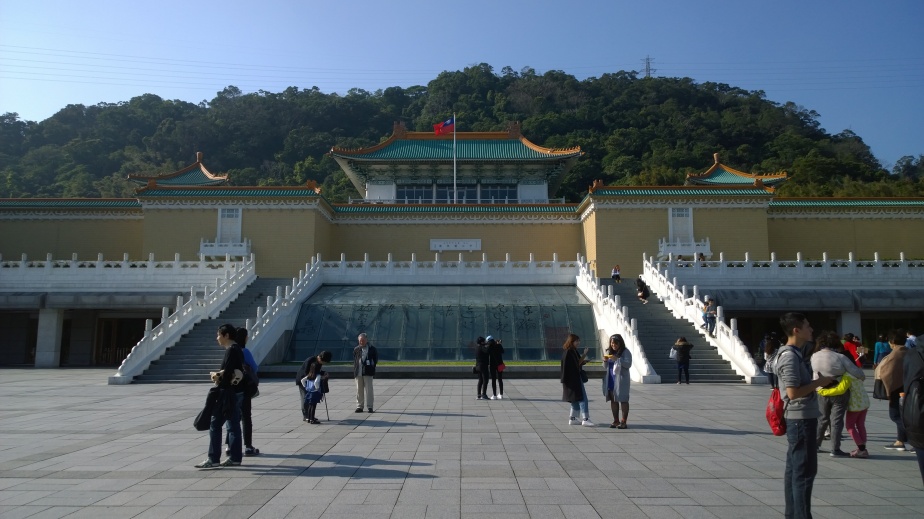
– Is this a Temple dedicated to God?
“No.”
– Then, is it the Imperial Court?
“Nope.”
This is a museum. To be more precise, it is the National Palace Museum (國立故宮博物院 Kuo-li Ku-Kong Po-wu-yüan or Guo-li Gu-Gong Bo-wu-yuan, “National Old Palace Grand Museum”).
To your information, the National Palace Museum can be traced back in 1925; and in the 47 years since its construction, it has undergone five expansion projects to reach the proportions seen today. Indeed, it is consisted of 3 floors containing the main exhibitions, plus the basement where visitors can find souvenirs and other information related to the museum. At the moment, a new ward is under construction, but it’s not open to the public yet.
As I mentioned already, the museum was established during 1925. However, It was originally located in Peking/Beijin, and more specifically in the Ts-Chin-Chêng (紫禁城 Zi-Jin-Cheng, “Purple Imperial Palace”), commonly known to the West as the Forbidden City. Since the Forbidden City was used as a palace, hence the museum was named “Palace Museum”. Moreover, this is also the reason why the Museum is build like a palace or more precisely, like a Ming-T’ang (明堂) – the place where an emperor used to hold meetings or worship ancestors-and-gods, with Northern Chinese style. The building itself is build in turquoise, yellow, and white. Although. turquoise is quite rare to see in Chinese buildings, this could possibly be an implication to the Chinese Dragon (Lung 龍), while yellow is the symbol color of the Emperor in Chinese culture.
All the exhibits within the National Palace Museum are of unique beauty and aesthetics; each of them evidences the cultural identity of this nation and unfolds the long history of the Island.
Among the exhibits, you can find a large part of the Manchurian Empire (滿清帝國, also known as Ch’ing or Qing, China’s last imperial dynasty) holdings, which were transported to Taiwan in 1949, after avoiding the flames of war; the objects are housed in the National Palace Museum since then.
Additionally, the National Palace Museum hostes two iconic “national treasures” of Chinese; the Jadeite Cabbage and and the Meat-shaped Stone. However, we can only see the Cabbage, as the Meat is currently located in the newly-opened the South Branch of National Palace Museum in Ka-gī (嘉義 Chia-yi). We are certainly visiting it!!

To your historical briefing, the “national treasures” in the museum were taken by the KMT-led government from the Peking (Beijing) National Palace Museum near the end of Chinese Civil War (or Chinese Revolution). This act is indicative of the complicated history of Taiwan – especially after the World War II.
Without doubt, the National Palace Museum in Taipei is not only a exemplar of architectural beauty, but also a place where every visitor can admire the cultural heritage and prosperity of this country. It accepts millions of visitors every year, with the overall number exceeding the 4.36 million.
So, if you ever find yourself in Taipei – whether you are a tourist or a national of Taiwan -, you definitely have to visit the National Palace Museum in order to get a better insight of the long and ambiguous history of this country.
Visiting Information: Unlike most of the museum, National Palace Museum is open everyday! You can visit there during 8:30 to 18:30, and it’s extended until 21:00 on Friday and Saturday!
Address: No.221, Sec. 2, Chi-Shan Road, Shi-Lin District, 11143 Taipei City, Taiwan
What’s Nearby?
- Chih-Shan Yüan (Garden of Great Virtuous) [Coming Soon!]
- Silks Palace at the National Palace Museum [Coming Soon!]









